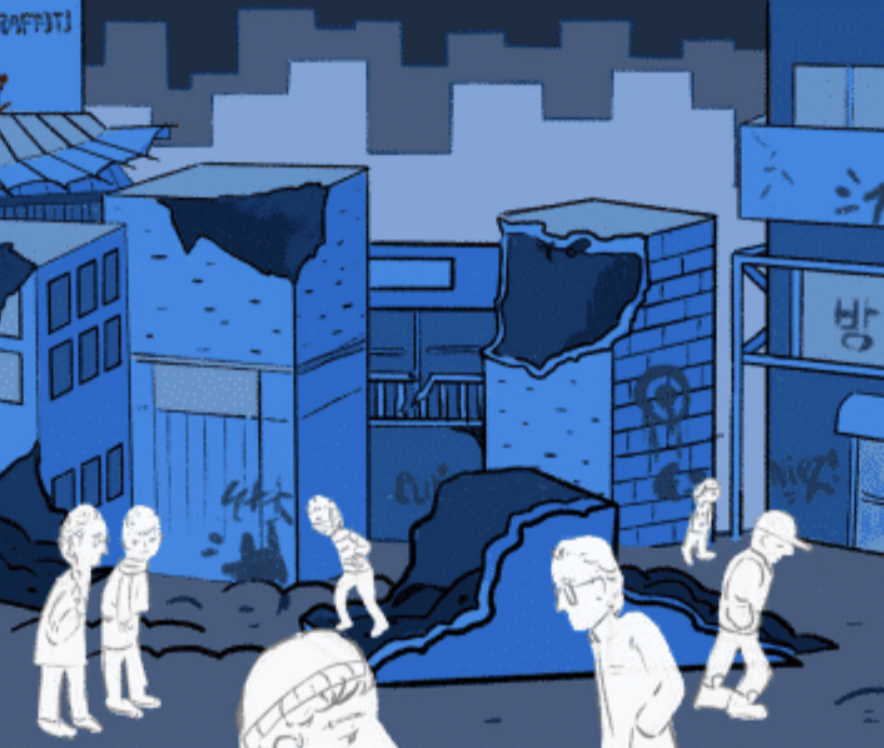Although some see the issue of America’s crumbling infrastructure as little more than a talking point for the presidential candidates, it is, in fact, a problem that needs immediate attention for two main reasons: it poses a threat to the safety of everyday Americans, and it stifles further economic growth.
The U.S. has long been a model nation. Its infrastructure was once something that would have been foolish for aspiring leaders of other countries to overlook. Yet, the U.S. infrastructure’s current failure to guarantee safety to the citizens that depend on it everyday is far from exemplary. One in ten bridges is considered “structurally deficient,” meaning that they have been restricted to light vehicles or closed to traffic. This precaution, however, is only sometimes observed. Another 14% of bridges are “functionally obsolete,” meaning that they are still in use, but lack the necessary safety features to properly suit their current task. The collapse of I-35W Mississippi River bridge in 2007 was the first case of its kind to grasp public attention, especially because engineers deemed the bridge “structurally deficient” nearly twenty years before the collapse. Six people died in this particular event, and poor transportation infrastructure has contributed to half of fatal motor vehicle accidents in the United States.
The paramount purpose of a democratic government is to ensure the safety of the people it represents. American authorities, however, have not done nearly enough to counter these growing problems.
Even though Congress recently passed a bill that allocates $305 billion to road repairs, it is still hundreds of millions of dollars short of what is needed to properly restore bridges and highways. The government must provide more money to the infrastructure budget.
The United States’s bad infrastructure poses a threat larger than an imminent safety risk — it also threatens future economic development. If more money is not invested in American infrastructure, the U.S. will continue to lose nearly one trillion dollars of business and 3.5 million jobs every year. Trucks are a fundamental part of delivering raw goods to manufactures and supplying consumer goods to stores. The Federal Highway Administration has estimated that congestion increases the cost of delivering goods by 50 percent to 250 percent. Current deficiencies revolving around America’s infrastructure are forcing businesses to relocate, and damaging the economy greatly.
Altogether, improving current transportation and power structures would return $1.44 for every dollar invested. Furthermore, investing money into American infrastructure would not only save jobs from escaping the U.S., but also add 2.7 million more. In addition, the investment would also increase the GDP by approximately $377 billion.
American infrastructure needs to be fixed and it needs to be fixed now. Our bridges are falling, our roads are crumbling, and our canals are clogging. But how does the federal government, particularly the president, go about doing that?
Uprooting the bureaucracy that currently mandates infrastructure projects is the first step that needs to be taken.
Inefficient government organizations contribute to, on average, six-year delays for major projects, which increase costs by over 100 percent.
The next essential step is to increase funding, particularly for highway-related repairs and improvements. $305 billion simply will not meet the amount of money needed to effectively fix American roads. The federal government should expand spending on infrastructure in the US and reduce spending in other sectors of the budget.
The government should repeat the actions of President Eisenhower and embark on a tremendous public works and transport campaign, which would modernize our infrastructure, provide more electricity and water to US citizens, and decrease goods prices due to lower transportation costs.
Improving American infrastructure has received lots of attention in this election cycle, especially from Democratic hopeful nominee, Sen. Bernie Sanders. Sanders has said that rebuilding “our crumbling infrastructure” is crucial to creating new American jobs and increasing the efficiency of our economic transportation system. Besides repairing roads, bridges, and tunnels, new highways, railroads, and waterways would be built for the benefit of the greater American economy.
Infrastructure has, indeed, become a talking point for presidential candidates and rightfully so. It is a matter that deserves immediate attention. We will have to wait until a new president sets foot in the Oval Office, however, to see if improving American infrastructure is just a talking point, or something that will actually materialize as a great boon to our economy in the long and far off decades ahead.




